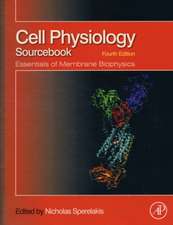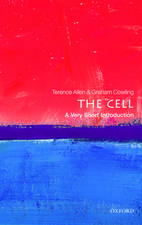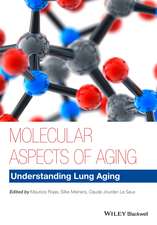Spermatophores: Development, Structure, Biochemical Attributes and Role in the Transfer of Spermatozoa: Zoophysiology, cartea 15
Autor T. Mannen Limba Engleză Paperback – 20 noi 2013
Din seria Zoophysiology
- 15%
 Preț: 647.92 lei
Preț: 647.92 lei - 15%
 Preț: 638.76 lei
Preț: 638.76 lei - 15%
 Preț: 638.24 lei
Preț: 638.24 lei - 15%
 Preț: 641.38 lei
Preț: 641.38 lei - 15%
 Preț: 634.82 lei
Preț: 634.82 lei - 15%
 Preț: 636.94 lei
Preț: 636.94 lei - 15%
 Preț: 640.88 lei
Preț: 640.88 lei - 15%
 Preț: 635.47 lei
Preț: 635.47 lei - 15%
 Preț: 637.78 lei
Preț: 637.78 lei - 15%
 Preț: 640.88 lei
Preț: 640.88 lei -
 Preț: 386.61 lei
Preț: 386.61 lei - 15%
 Preț: 637.78 lei
Preț: 637.78 lei - 15%
 Preț: 638.24 lei
Preț: 638.24 lei - 15%
 Preț: 642.83 lei
Preț: 642.83 lei - 15%
 Preț: 634.68 lei
Preț: 634.68 lei - 15%
 Preț: 642.83 lei
Preț: 642.83 lei - 18%
 Preț: 999.60 lei
Preț: 999.60 lei - 15%
 Preț: 639.41 lei
Preț: 639.41 lei - 15%
 Preț: 638.43 lei
Preț: 638.43 lei - 15%
 Preț: 651.34 lei
Preț: 651.34 lei - 15%
 Preț: 638.57 lei
Preț: 638.57 lei - 15%
 Preț: 637.46 lei
Preț: 637.46 lei - 15%
 Preț: 637.59 lei
Preț: 637.59 lei - 15%
 Preț: 641.53 lei
Preț: 641.53 lei - 15%
 Preț: 636.80 lei
Preț: 636.80 lei -
 Preț: 386.22 lei
Preț: 386.22 lei - 15%
 Preț: 632.55 lei
Preț: 632.55 lei - 15%
 Preț: 695.19 lei
Preț: 695.19 lei -
 Preț: 401.24 lei
Preț: 401.24 lei - 18%
 Preț: 942.01 lei
Preț: 942.01 lei - 18%
 Preț: 945.30 lei
Preț: 945.30 lei - 15%
 Preț: 652.17 lei
Preț: 652.17 lei - 15%
 Preț: 632.70 lei
Preț: 632.70 lei - 15%
 Preț: 640.71 lei
Preț: 640.71 lei - 15%
 Preț: 644.30 lei
Preț: 644.30 lei - 15%
 Preț: 642.68 lei
Preț: 642.68 lei
Preț: 386.61 lei
Nou
Puncte Express: 580
Preț estimativ în valută:
73.98€ • 77.45$ • 61.21£
73.98€ • 77.45$ • 61.21£
Carte tipărită la comandă
Livrare economică 07-21 aprilie
Preluare comenzi: 021 569.72.76
Specificații
ISBN-13: 9783642823107
ISBN-10: 3642823106
Pagini: 236
Ilustrații: XII, 220 p. 40 illus. in color.
Dimensiuni: 170 x 244 x 12 mm
Greutate: 0.38 kg
Ediția:Softcover reprint of the original 1st ed. 1984
Editura: Springer Berlin, Heidelberg
Colecția Springer
Seria Zoophysiology
Locul publicării:Berlin, Heidelberg, Germany
ISBN-10: 3642823106
Pagini: 236
Ilustrații: XII, 220 p. 40 illus. in color.
Dimensiuni: 170 x 244 x 12 mm
Greutate: 0.38 kg
Ediția:Softcover reprint of the original 1st ed. 1984
Editura: Springer Berlin, Heidelberg
Colecția Springer
Seria Zoophysiology
Locul publicării:Berlin, Heidelberg, Germany
Public țintă
ResearchCuprins
1. General Considerations.- 1.1 Beginnings.- 1.2 Definitions.- 1.3 Spermatophore as Repository and Transport Vehicle for Spermatozoa. Certain Similarity to Epididymis.- 1.4 Direct and Indirect Insemination Routes.- 1.5 Role of Spermatophore in Fertilization and Nutrition.- 1.6 Common Features of Spermatophore, Copulatory Plug, and Sphragis.- 1.7 Conflicting Views on the Origin and Purpose of Spermatophores.- 2. Platyhelminthes, Aschelminthes, and Phoronida.- 2.1 Early Observations on the Attachment of Spermatophores to the Skin of Turbellaria.- 2.2 Mechanisms of Sperm Transfer in Turbellaria and Monogenea.- 2.3 Hypodermic Impregnation in Rotifera and Other Aschelminthes.- 2.4 Spermatophores of Phoronis vancouverensis and Phoronopsis harmeri, and the Role of Lophophoral Organs in Phoronida.- 3. Mollusca.- 3.1 Gastropoda: Prosobranchia, Opisthobranchia, and Pulmonata.- 3.2 Cephalopoda: Main Features of Male Reproductive Function in Nautiloidea, Decapoda, Vampyromorpha, and Octopoda.- 3.3 Nautiloidea: Nautilus pompilius and Nautilus macromphalus.- 3.4 Decapoda: Loligo pealii, Rossia macrosoma, Rossia pacifica, Sepiola rondeletii, and Sepia officinalis.- 3.5 Small Octopoda: Octopus vulgaris, Octopus hummelincki, Octopus bimaculatus, Other Small Octopuses, Eledone moschata, and Eledone cirrhosa.- 3.6 The Giant Octopus of the North Pacific, Octopus dofleini martini.- 3.7 Biochemistry of the Giant Octopus Spermatophore.- 4. Annelida.- 4.1 Polychaeta, Including Myzostomaria, and Archiannelida.- 4.2 Oligochaeta.- 4.3 Hirudinea.- 5. Onychophora and Myriapoda.- 5.1 Dermal Copulation and Spermatophores in Onychophora.- 5.2 Production of Spermatophores in Pauropoda.- 5.3 Direct and Indirect Transfer of Spermatozoa in Diplopoda.- 5.4 Peculiar Ring Structure of Spermatophores and Indirect Sperm Transfer in Chilopoda.- 5.5 External Fertilization in Symphyla.- 6. Insecta.- 6.1 Insemination Routes and Sperm-Encompassing Devices.- 6.2 Male Genital System.- 6.3 Relationships Between Sperm-Cysts, Sperm-Bundles, Spermatodesms, Spermatozeugmata, Droplet Spermatophores, and Typical Spermatophores.- 6.4 Role of Male Accessory Secretions in the Production of Spermatophores.- 6.5 Some Unusual Chemical Constituents of Male Accessory Secretions, and Their Passage into the Semen and Spermatophores: Indolalkyl Amine, Fructose, Glucose, and Trehalose, Pyrophosphate, Uric Acid, Cyclic Guanosine 3?,5?-Monophosphate, and Prostaglandin Synthetase.- 6.6 Gustatory and Aphrodisiac Attributes of Male Secretory Products and Spermatophores.- 6.7 Droplet Spermatophores in Apterygotan Insects: Collembola, Diplura, and Thysanura.- 6.8 Typical Spermatophores and Different Mechanisms of Their Assembly in Pterygotan Insects.- 6.9 Mating Flights of Ephemeroptera and Odonata.- 6.10 Spermatophores of Orthopteroid Insects: Blattidae, Mantoidea, Phasmida, Gryllidae, Tettigoniidae, and Acrididae.- 6.11 Spermatophores of Hemiptera, Neuroptera, Coleoptera, Mecoptera, Trichoptera, Lepidoptera, Diptera, and Hymenoptera.- 7. Crustacea.- 7.1 Ostracoda.- 7.2 Copepoda: Harpacticoida, Calanoida, Cyclopoida, and Caligoida.- 7.3 Malacostraca: Isopoda, Cumacea, Mysidacea, Euphausiacea, and Decapoda.- 8. Arachnida.- 8.1 Spermatophores and Sperm Transfer Mechanisms in Arachnids.- 8.2 Scorpiones.- 8.3 Pseudoscorpiones.- 8.4 Uropygi — Thelyphonida — Holopeltidia.- 8.5 Amblypygi — Phrynichidea.- 8.6 Araneae.- 8.7 Acari: Water Mites (Hydrachnidae); Terrestrial Mites (Trombiculidae, Trombidiformes, Oribatei, and Eriophyidae); Ticks (Ixodidae and Argasidae).- 8.8 Triggering of SpermatophoricReaction in Ticks by Carbon Dioxide.- 8.9 Occurrence of Spermine in Tick Spermatophores.- 9. Chaetognatha and Pogonophora.- 9.1 Exchange of Spermatophores in Hermaphroditic Chaetognatha.- 9.2 Special Features of Spermatophore Function in Pogonophora.- 10. Sporadic Occurrence of Spermatophores and Spermatozeugmata in Vertebrata.- 10.1 The Difficulty of Naming Correctly Various Forms of Sperm-Aggregates.- 10.2 Chondrichthyes.- 10.3 Viviparous and Ovo-Viviparous Teleosti.- 10.4 Amphibia.- Concluding Remarks.










